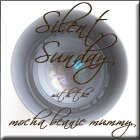 In the early years Noah's arks were considered to be among the most popular wooden toys in 19th century all over Europe and America. Due to their biblical name and reference children were not allowed to play with them with the exception of on a Sunday.
In the early years Noah's arks were considered to be among the most popular wooden toys in 19th century all over Europe and America. Due to their biblical name and reference children were not allowed to play with them with the exception of on a Sunday. The production of Noah's Arks can be dated back as far as the 17th century until present day but their popularity peaked during the 19th century. Most Arks found from this period were either made in Germany or made in America by German immigrants.
The animals made for the ark were creative, notional figures and largely produced by a cottage industry. Within the cottage industry there would be a family producing one animal type and another family a different species and more often than not the families had never even seen the animal that they were producing in real life, nor did this matter as they were creating a toy not teaching biology. It was common to see animals painted in blues and greens as their imagination was reflected in their creation. It was also common place to have one family doing the carving and another to finish with the painting.
The rarest of the animals are the small creatures such as snakes and insects and also pairs that have strike a different pose to the other.
The manufacturer of the ark was largely in small factories from wood or often wood that was made to look like straw and these were named "prisoner arks" as though they were made from the bedding straw of prisoners, which some often were. Early on the roofs were removable so that the animals could be stored within the body of the ark but it was found that they kept coming off and getting lost so later on hinges were added and usually a dove was also added to the roof.
The original manufacturer was virtually impossible to trace as they were almost all produced by a cottage industry. The compliment of how many animal should accompany the ark is also difficult to determine, it is thought that it should be 8 as that is the number of Noah's family members but that is not always the case. In around the 1800's lithograph was becoming well developed and was widely use to decorate the arks to save on some of the costs of hand painting.
As a traditional toy website Knot Just Jigs are delighted to be able to offer wooden Noah's Arks in 2 sizes which are both hand painted and fair trade.









No comments:
Post a Comment